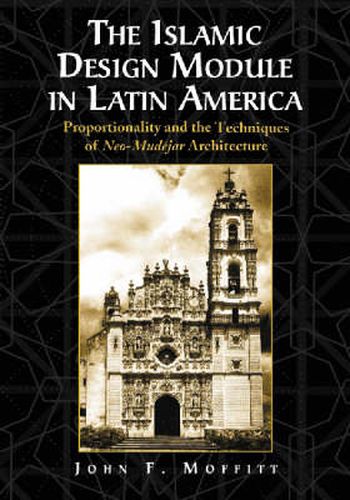Readings Newsletter
Become a Readings Member to make your shopping experience even easier.
Sign in or sign up for free!
You’re not far away from qualifying for FREE standard shipping within Australia
You’ve qualified for FREE standard shipping within Australia
The cart is loading…






This study analyses the distinctive look of Hispanic architecture. Its triangulate format, originated in Islamic Spain, was based on workshop techniques once used by journeyman designers and simple artisans. Spain was the only European transatlantic colonial power to have once been occupied by Islamic overlords. Spain’s conquistadors took their traditional building methods to Latin America. Formal analyses of the facades of various Latin American churches reveal them to reiterate procedures worked out in Andalusia by Islamic builders in the ninth and tenth centuries. Though widely separated by time and place, both share a proportionate system determining abstract ratios; in both cases, this regulating format was derived from manipulations of the Pythagorean triangles. This
trazado regulador
is only expressed in ratios, with no numbers, and is illustrated here with 84 visual examples including measured drawings of Egyptian, Greek, Roman, and medieval European prototypes. Grounded in historical and physical data, the research is partially drawn from four practical builders’ manuals: two seventeenth-century Spanish ones and two Mexican ones from ca. 1640 and 1800. In an appendix, Viollet-le-Duc (a major nineteenth-century architect) explains architectural proportionality and the design function of the Pythagorean Triangle.
$9.00 standard shipping within Australia
FREE standard shipping within Australia for orders over $100.00
Express & International shipping calculated at checkout
This study analyses the distinctive look of Hispanic architecture. Its triangulate format, originated in Islamic Spain, was based on workshop techniques once used by journeyman designers and simple artisans. Spain was the only European transatlantic colonial power to have once been occupied by Islamic overlords. Spain’s conquistadors took their traditional building methods to Latin America. Formal analyses of the facades of various Latin American churches reveal them to reiterate procedures worked out in Andalusia by Islamic builders in the ninth and tenth centuries. Though widely separated by time and place, both share a proportionate system determining abstract ratios; in both cases, this regulating format was derived from manipulations of the Pythagorean triangles. This
trazado regulador
is only expressed in ratios, with no numbers, and is illustrated here with 84 visual examples including measured drawings of Egyptian, Greek, Roman, and medieval European prototypes. Grounded in historical and physical data, the research is partially drawn from four practical builders’ manuals: two seventeenth-century Spanish ones and two Mexican ones from ca. 1640 and 1800. In an appendix, Viollet-le-Duc (a major nineteenth-century architect) explains architectural proportionality and the design function of the Pythagorean Triangle.